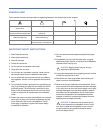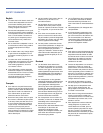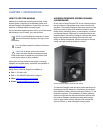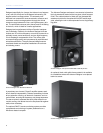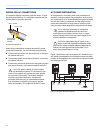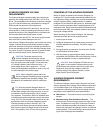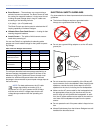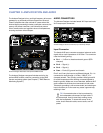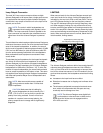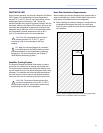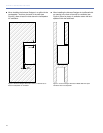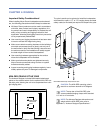
ACHERON DESIGNER OPERATING INSTRUCTIONS
11
ACHERON DESIGNER VOLTAGE
REQUIREMENTS
The Acheron Designer operates safely and continuously
when the AC voltage stays within 100–264 V AC at 50 or
60 Hz. The loudspeaker can withstand continuous voltages
up to 275 volts and allows any combination of voltage to
GND (neutral-line-ground or line-line-ground).
If the voltage drops below 90 V (brownout), the unit uses
stored power to continue operating temporarily; the loud-
speaker shuts down if the voltage does not rise above the
low boundary before the stored power is used.
If the voltage rises above 275 V, the power supply immedi-
ately shuts off to prevent damage to the unit.
If the Acheron Designer shuts down due to either low or high
voltage, its power supply automatically powers up again
after three seconds, so long as the voltage has returned to
its normal operating window. If the Acheron Designer does
not power up after 10 seconds, remove AC power immedi-
ately and contact Meyer Sound Technical Support.
CAUTION: The power source for the
Acheron Designer should always operate
within the required voltage range, at least a few volts
from the upper and lower ranges. This ensures that
AC voltage variations from the service entry — or
peak voltage drops due to cable runs — will not
cause the loudspeaker’s amplifier to cycle on and off
or cause damage to the power supply.
NOTE: When voltage fluctuates within the
Acheron Designer’s operating range, automatic
tap selection stabilizes the operating voltage. This
tap selection is instantaneous with no audible arti-
facts.
TIP: Since the Acheron Designer does not
require a dedicated neutral line, and it can toler-
ate elevated voltages from the ground line, it can be
connected to line-line terminals in 120 V, 3-phase
Wye systems. This results in 208 V AC between lines
(nominal) and therefore draws less current than when
using 120 V AC (line-neutral). Make sure that the volt-
age remains within the Acheron Designer’s recom-
mended operating window (100-264 V AC). The
ground line must always be used for safety reasons
and the line-to-ground voltage should never exceed
264 V AC (typically 120 V AC from line-to-ground).
POWERING UP THE ACHERON DESIGNER
When AC power is applied to the Acheron Designer, its
Intelligent AC™ power supply automatically selects the cor-
rect operating voltage, allowing it to be used internationally
without manually setting voltage switches. In addition,
Intelligent AC provides soft-start power up, eliminating high
inrush currents; suppresses high-voltage transients up to
several kilovolts; filters common mode and differential mode
radio frequencies (EMI); and sustains operation temporarily
during low-voltage periods.
When powering up the Acheron Designer, the following
startup events take place over several seconds.
1. Audio output is muted.
2. Voltage is detected and the power supply mode is auto-
matically adjusted as necessary. The power supply
ramps up.
3. During the power up sequence, the three-color On/Sta-
tus LED flashes all three colors.
4. After the power up sequence and system check have
completed, the ON/Status LED turns solid green, indicat-
ing the loudspeaker is ready to reproduce audio.
CAUTION: If the On/Status LED does not turn
green, or the Acheron Designer does not out-
put audio after ten seconds, remove AC power imme-
diately and verify that the voltage is within the
required range. If the problem persists, contact
Meyer Sound Technical Support.
ACHERON DESIGNER CURRENT
REQUIREMENTS
The Acheron Designer current draw is dynamic and fluctu-
ates as operating levels change. Since different cables and
circuit breakers heat up at varying rates, it is important to
understand the following types of current ratings and how
they affect circuit breaker and cable specifications.
■ Idle Current — The maximum rms current during idle
periods.
■ Maximum Long-Term Continuous Current — The
maximum rms current during a period of at least 10 sec-
onds. The Maximum Long-Term Continuous Current is
used to calculate temperature increases for cables, to
ensure that cable sizes and gauges conform to electrical
code standards. The current rating is also used as a rat-
ing for slow-reacting thermal breakers.
!
!



